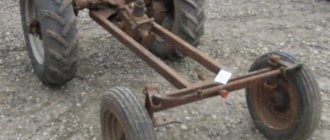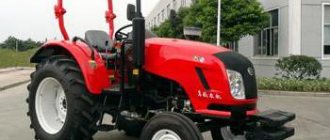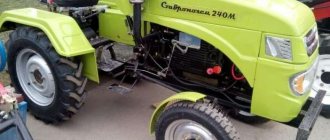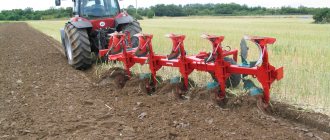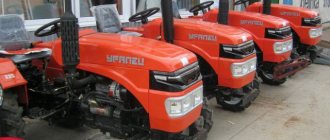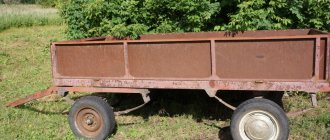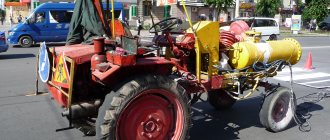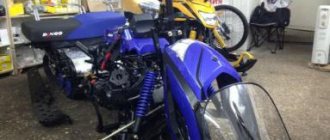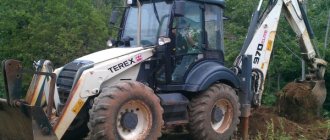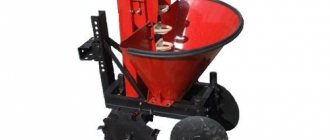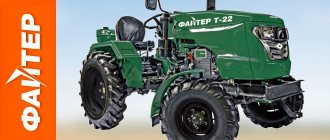Features of mini equipment from Japan
To equip Japanese mini tractors, manufacturers used reliable suspensions and economical diesel engines with a long service life. They are intelligently designed and make it possible to take advantage of all the benefits of mechanization. Farmers combine them with plows, planters, cultivators, mowers, diggers, loaders and other additional tools and effectively use them for cultivating the soil, sowing crops, making hay, and harvesting crops. They are capable of digging trenches and drilling wells, loading and transporting goods.
Mini tractors made in Japan have specific properties that distinguish them very favorably from similar products manufactured in other countries. They are characterized by such features as:
- endurance;
- permeability;
- good load capacity;
- high performance;
- durability of operation;
- attractive exterior design;
- adaptability for comfortable use.
All mini tractors, manufactured by the largest Japanese companies, are famous for their excellent assembly, which is many times superior in quality to any model of the domestic tractor industry. They are designed to perform work in any conditions and are optimally suited for private, farm and municipal enterprises.
Specifications
Japanese small-sized tractors are characterized by the presence of efficient diesel engines and innovative wheels with gearboxes to regulate high-speed revolutions and improve traction with the soil. In addition, the manufacturers equipped them with a differential lock, glow plugs, a coupled brake system and a convenient gear shift mechanism, which ensures uninterrupted operation of Japanese motorcycles for a long time.
Mini tractors have an independent three-point hitch mechanism and enhanced hydraulics, which greatly facilitates the work with mounted implements. The improved hydraulic system allows lifting to a height with a force of up to 1000 kg, which significantly expands the capabilities of agricultural machines.
Excellent technical and operational parameters and convenient computer control, which are endowed with mini-equipment from Japan, help its owners implement modern farming methods, perform quality work and significantly save their own time.
Tips for choosing
When purchasing a mini-tractor, you need to take into account the area of land, the structure, type of soil and the planned intensity of operation. If equipment is needed only for caring for a local area of up to 2 hectares, then models with a capacity of 16-20 hp will cope with this task. With. The most acceptable solution for owners of plots of 4-5 hectares or more is machines with a power of 20-24 hp. With. For serious tillage and cultivation, equipment with greater productivity will be required. It is advisable for owners of land areas of 10 hectares or more to acquire units with powerful 35-40 horsepower diesel engines.
With the increase in the productivity of mini-tractors, the possibility of arranging them with replaceable equipment increases, the number and complexity of which varies between models. There is no point in buying a large number of attachments for 16 HP machines. With. for garden care and snow removal. Whereas on models with 25-horsepower diesel engines and more, you can install any mounted implements.
Not every landowner can afford to buy a new Japanese-made tractor. Therefore, many purchase units on the secondary agricultural machinery market. Interest in second hand agricultural machines from Japan is due to the attractive combination of impressive remaining service life and reasonable prices.
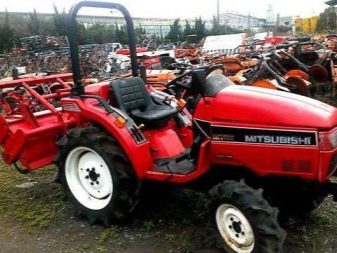
Manufacturers of Japanese mini tractors
Small-sized Japanese tractors of the brands KUBOTA, ISEKI, MITSUBISHI, YANMAR, SHIBAURA are recognized as the most popular agricultural machines. Their popularity is due to many factors, and the review below, which briefly describes the most prominent representatives of special equipment from Japan, will help you learn about them.
KUBOTA
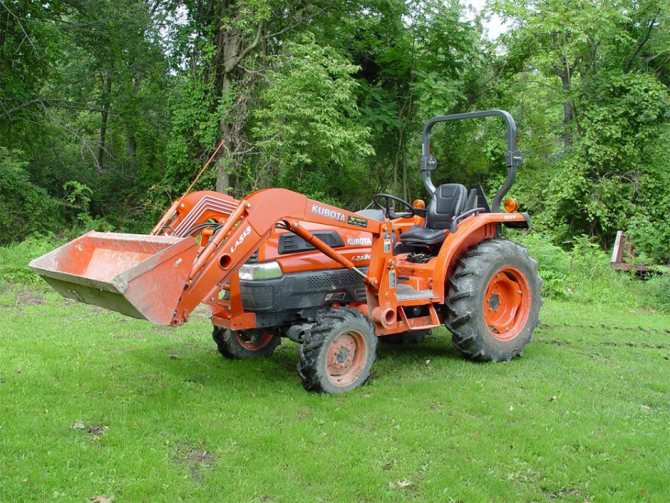
Mini tractors of this brand are represented by the B, BX, X, L, M series and a wide range of models - B7100, B7001, B1500, BX1870, BX2370, BX2670, BX25D, etc. Manufacturers specially developed variations of the X series for subsidiary farms, and all others - for agribusiness enterprises. Japanese KUBOTA tractors are characterized by high ergonomics and the ability to operate without harmful emissions into the atmosphere. They are equipped with small-sized diesel engines of 16-25 hp. with low noise level.
Models of mini tractors B7100, B7001 are equipped with a 16-horsepower 3-cylinder diesel engine and a manual transmission. They have a high ground clearance (240 mm) and a wide range of adjustable front and rear wheel tracks.
The B1500 and BX1870 minitractors are equipped with an 18-horsepower engine and a 9-speed transmission. They have double differential locks and a 3-speed PTO. The machines of this series are designed for complete mechanization of agricultural, municipal, and road construction work.
The small Japanese tractors BX2370, BX25D and BX2670 are equipped with 23-, 23- and 25-horsepower engines (respectively), specially designed for hydrostatic transmission. Their combined operation provides excellent torque and increases the traction force of the machines. The lifting capacity of the equipment reaches 310 kg, and the maximum speed is 14 km/h.
ISEKI
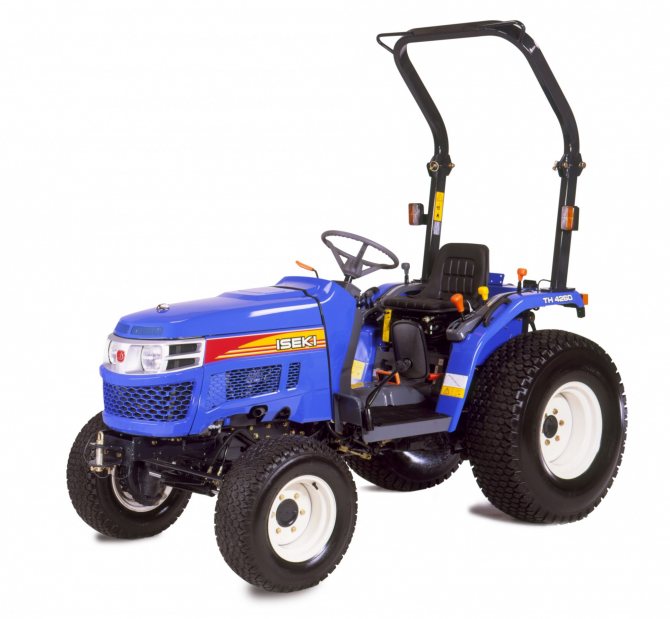
The range of ISEKI mini tractors consists of the TXG, TM, TG, TH, TF, TJ, TJW series.
The TXG series includes a single model, the TXG237. It is compact, maneuverable and intended for municipal enterprises and small contracting organizations primarily for landscaping and landscaping. The mini tractor can be used with forks, a front bucket, a blade, a brush, and a lawn mower.
The TM and TH series include tractors with power from 16 to 25 hp. Models of these series are widely used in landscape design and for agricultural work. Their distinctive feature is convenient access to the engine compartment, which creates more comfortable conditions for the driver and facilitates maintenance of the working components of the mini tractor.
Models of the TG series are equipped with 33-50 horsepower diesel engines. They have a 12x12 gearbox, power steering, 3-level transmission and multi-disc brakes. Mini tractors of this series have high cross-country ability and are distinguished by good maintainability.
Agricultural machines of the TF series are equipped with 27-horsepower 3-cylinder diesel engines. They have super cross-country ability and are designed for use in difficult conditions. They can have all-wheel drive or only front-wheel drive. The driver's seat of the mini tractor is protected by a spacious and comfortable cabin.
Tractors of the TJ and TJW series belong to professional powerful special equipment. They are equipped with four-cylinder engines with 75-105 hp. and can be mounted with a wide range of auxiliary implements.
ISEKI mini tractors are famous for their ability to operate uninterruptedly for many years. They are durable and can be used for tough tasks.
MITSUBISHI

A distinctive feature of mini tractors of this Japanese brand is high performance and versatility. They are adapted to perform a wide range of tasks and are widely used not only in the agricultural sector, but also in public utilities.
The MT-180D mini tractor with all-wheel drive and rear differential lock is in greatest demand. This model is equipped with an 18.5-horsepower engine with an improved fuel filter and an original proprietary transmission. All components of the Mitsubishi MT-180D minitractor have a significant margin of safety and are designed for intense loads. The use of appropriate attachments and trailers allows you to fully realize the capabilities of this model.
YANMAR

Yanmar mini tractors are presented in several modifications. Almost all of them have a hydrostatic transmission design, rear- or all-wheel drive, a three-point hitch mechanism with hydraulic control, and a differential lock.
Among Yanmar's tractor products, the 14-horsepower F-14d model is considered the most popular. It is equipped with a six-speed gearbox and all-wheel drive chassis. The factory equipment includes a rototiller with a working grip of 1200 mm. Good traction parameters ensure plowing of medium-density soil to a depth of about 200 mm, as well as towing a trailer with a lifting capacity of up to 2500 tons.
A distinctive feature of Yanmar brand equipment is its compactness and excellent maneuverability. It is this Japanese company that produces the super-compact tractor Ke100, which is recognized as the smallest in the world.
SHIBAURA
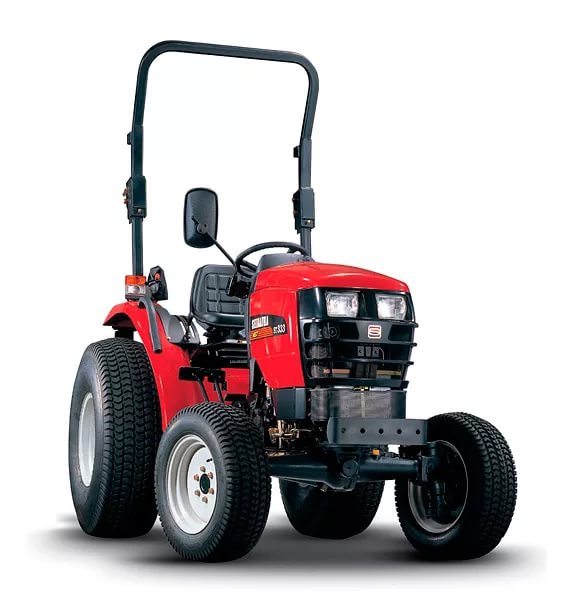
Mini tractors of the Shibaura brand are multifunctional and designed for year-round use. They have 4WD all-wheel drive and are equipped with 18-40 hp diesel engines. of the same production, as well as a four-speed gearbox, differential lock, and a three-speed PTO.
Shibaur mini tractors are represented by an extensive range of models. The most popular among them is the ST318 modification. It is equipped with a three-cylinder 15.8-horsepower engine with a volume of 954 cm 3. The tractor has 12 gears (9 forward and 3 reverse), dry clutch, manual transmission. Ground clearance of 270 mm and wide tires with deep tread provide good maneuverability, and small dimensions and a small turning radius provide high maneuverability.
User manual
The price of Japanese Mitsubishi mini tractors is not small, but it is fully justified by its quality and reliability. Cheap equipment wears out and breaks down much faster. Buying a Japanese mini tractor, even a used one, will be a profitable investment with a quick payback.
Operating instructions for the Mitsubishi Shakti mini tractor: Operating instructions for the Mitsubishi mini tractor
Taking into account the use of Mitsubishi in Russia, specific improvements have been made to the design of the mini tractor, allowing it to be operated in different climatic conditions. To achieve this, the vehicles are equipped with an improved fuel filter and a removable insulated cabin. The design of the filter allows you to refuel the minitractor with low-quality diesel.
First start
Each Mitsubishi mini tractor model undergoes thorough factory control. The operating instructions' recommendations for break-in include careful and careful testing of all operating systems during the first 25-50 hours of operation. During this period, it is recommended to perform all work, avoiding increased loads, at reduced speeds.
After the recommended period, change the engine oil, transmission oil, engine oil filter, and perform other manipulations in accordance with the manual.
Maintenance
The schedule for preventive inspections of the tractor is indicated in the manual; in addition to daily technical inspections, the manufacturer recommends performing specific work every 100, 200, 400 hours of operation.
Mitsubishi mini tractor hood structure
Mitsubishi diesel engines use API class motor or universal tractor oil, GL-3 and higher class hydraulic oil is used for the transmission, and NLG1-N1 grease is used for the steering mechanism.
At the end of field work, conservation is carried out, namely: the tractor is cleaned of dirt, dried, drained of oil and fuel, parts are lubricated to prevent corrosion from forming, covered and placed in a dry place.
Basic malfunctions and ways to eliminate them
Guaranteeing owners the impeccable long-term operation of Mitsubishi mini tractors, the manufacturer requires strict compliance with the operating rules of the machine.
Mitsubishi mini tractor design
The most common breakdowns and malfunctions arise due to basic ignorance or non-compliance with the instructions.
- When operating a Mitsubishi mini tractor in difficult conditions, it is recommended to carry out preventive maintenance more frequently.
- When the engine stops due to a lack of diesel fuel, air enters the fuel line, which can only be removed by flushing the fuel system.
- If the battery is not used for a long time (preservation of equipment, other reasons), it is necessary to periodically recharge it, avoiding complete discharge.
- You should carefully connect the battery contacts - the system has a negative ground connection.
- When cleaning the radiator, do not damage its surface; any defect or deformation will significantly reduce the effectiveness of cooling.
The clutch does not transmit torque:
- There is no free play of the pedal (it needs to be adjusted);
- The drive discs are worn out or have oil stains (they need to be replaced or cleaned);
- The discs on the splines are jamming (you should check their position and, if necessary, remove the jamming).
Attachment does not lift:
- The oil level in the hydraulic system has dropped below the minimum mark (add oil);
- The hydraulic pump is turned off (turn it on);
- The hydraulic safety valve is stuck (disassemble and clean the valve).
The brake does not work well:
- The free play of the pedal has increased (adjust its position);
- The brake disc or pad is worn out (replace the relevant parts).
Gearbox overheats:
- Small gear or bearing clearance (adjust);
- Lack of oil or its low quality (add oil that is suitable for this model to the required level);
Starter does not work:
- Broken or poor contact of the wire (solder or connect it);
- Weak battery charge (charge it);
- Short circuit (clean the commutator surface or replace the brushes);
- Poor contact of the magnetic switch (tighten the switch travel by 2-3 turns).
Advantages and disadvantages
Japanese mini tractors are, first of all, the highest quality components and assemblies developed using high-tech equipment. They are modern, incredibly durable and demonstrate:
- good performance with relatively low weight and compact dimensions;
- versatility, manifested in the ability to perform any agricultural work;
- functionality and ability to use with a wide range of additional tools;
- efficiency due to moderate fuel consumption;
- comfortable driving, provided by power steering and ergonomic design of the driver's workplace.
Mini tractors made in Japan have excellent traction performance. For comparison: “Japanese” with an engine of 17-18 hp. productively does the same job as a Chinese 25-horsepower tractor. But unlike Chinese technology, it develops greater speed, consumes fuel and oil more economically, and produces plowing of better quality.
Despite the large list of advantages, Japanese mini-units also have a number of disadvantages. The main one is the high cost, which often turns out to be a significant obstacle to the purchase of such agricultural machinery. Among the disadvantages, owners of Japanese tractors include increased demands on service and the quality of fuels and lubricants, as well as the inability to independently eliminate serious malfunctions and failures.
User manual
Iseki mini station wagons have high technical performance. A machine with an average power of 16-18 hp. is able to easily perform work that can be done by its Chinese counterpart with significantly more power - at least 25 hp.
The durability of parts and assemblies of Iseki mini tractors, impeccable performance characteristics, long working life are the distinctive characteristics of Iseki mini tractors. Therefore, equipment of this class is extremely demanding for systematic preventive maintenance and timely repairs.
Operating instructions: Iseki mini tractor operating instructions
Service
The Iseki minitractor consumes diesel fuel. Under the hood of each tractor there is a sign with recommendations regarding routine maintenance. For engine oil, a replacement period is set after 100 hours of operation, and a systematic check is every 5 engine hours. Iseki mini tractors operate on semi-synthetic diesel oils: SAE 10V30 for the engine, MGE 46V for hydraulic displacement transmissions, SAE 80 for hydraulics and steering gear.
The condition of the air filter is checked every 50 hours of operation, and after 400 operating hours the air cleaning system is completely replaced. After 940 hours of operation, a full test of the technical condition of the tractor is carried out - checking the operation of instruments, mechanisms, components, and re-tensioning the fasteners.
Disadvantages when servicing Iseki mini tractors:
- The exceptional quality of the mini tractor affects its price - much higher than conventional budget-class analogues.
- Repairs are problematic and costly - only original spare parts are suitable for Iseki, which can be purchased through the official dealer network.
- Incorrectness when working with front loaders, which, however, is typical for all mini tractors.
Preservation of the Iseki mini tractor
- It is necessary to regularly clean the body of the minitractor from dust and oil stains, monitor the tire pressure, and also adjust the clutch and brake pedals every 50-100 hours of operation;
- At the end of field work, conservation is carried out, namely: the tractor is cleaned of dirt, dried, drained of oil and fuel, parts are lubricated to prevent corrosion from forming, covered and placed in a dry place.
First start
The first start-up and running-in of the tractor is carried out in accordance with the operating instructions.
Video review of the first trip of the Iseki 1500 mini tractor
Video review of running in the Iseki 1500 mini tractor
Basic malfunctions and ways to eliminate them
Although Japanese mini tractors are famous for their durability and long service life, they require proper maintenance and regular repairs.
Following simple recommendations will help you avoid annoying breakdowns and malfunctions:
- During each starting attempt, the starter is not allowed to operate for more than 10 seconds; continuous starting attempts will lead to battery discharge.
- Be sure to warm up the engine, regardless of temperature, this will extend the life of the engine.
- Checking the status of your oil pressure warning lights will help you avoid serious damage due to insufficient lubrication.
- Driving at high speeds is prevented if the right and left brakes do not operate synchronously.
The clutch does not transmit torque:
- There is no free play of the pedal (it needs to be adjusted);
- The drive discs are worn out or have oil stains (they need to be replaced or cleaned);
- The discs on the splines are jamming (you should check their position and, if necessary, remove the jamming).
Attachment does not lift:
- The oil level in the hydraulic system has dropped below the minimum mark (add oil);
- The hydraulic pump is turned off (turn it on);
- The hydraulic safety valve is stuck (disassemble and clean the valve).
Braking is weak:
- The free play of the pedal has increased (adjust its position);
- The brake disc or pad is worn out (replace the relevant parts).
Gearbox overheats:
- Small gear or bearing clearance (adjust);
- Lack of oil or its low quality (add oil that is suitable for this model to the required level);
Starter does not work:
- Broken or poor contact of the wire (solder or connect it);
- Weak battery charge (charge it);
- Short circuit (clean the commutator surface or replace the brushes);
- Poor contact of the magnetic switch (tighten the switch travel by 2-3 turns).
